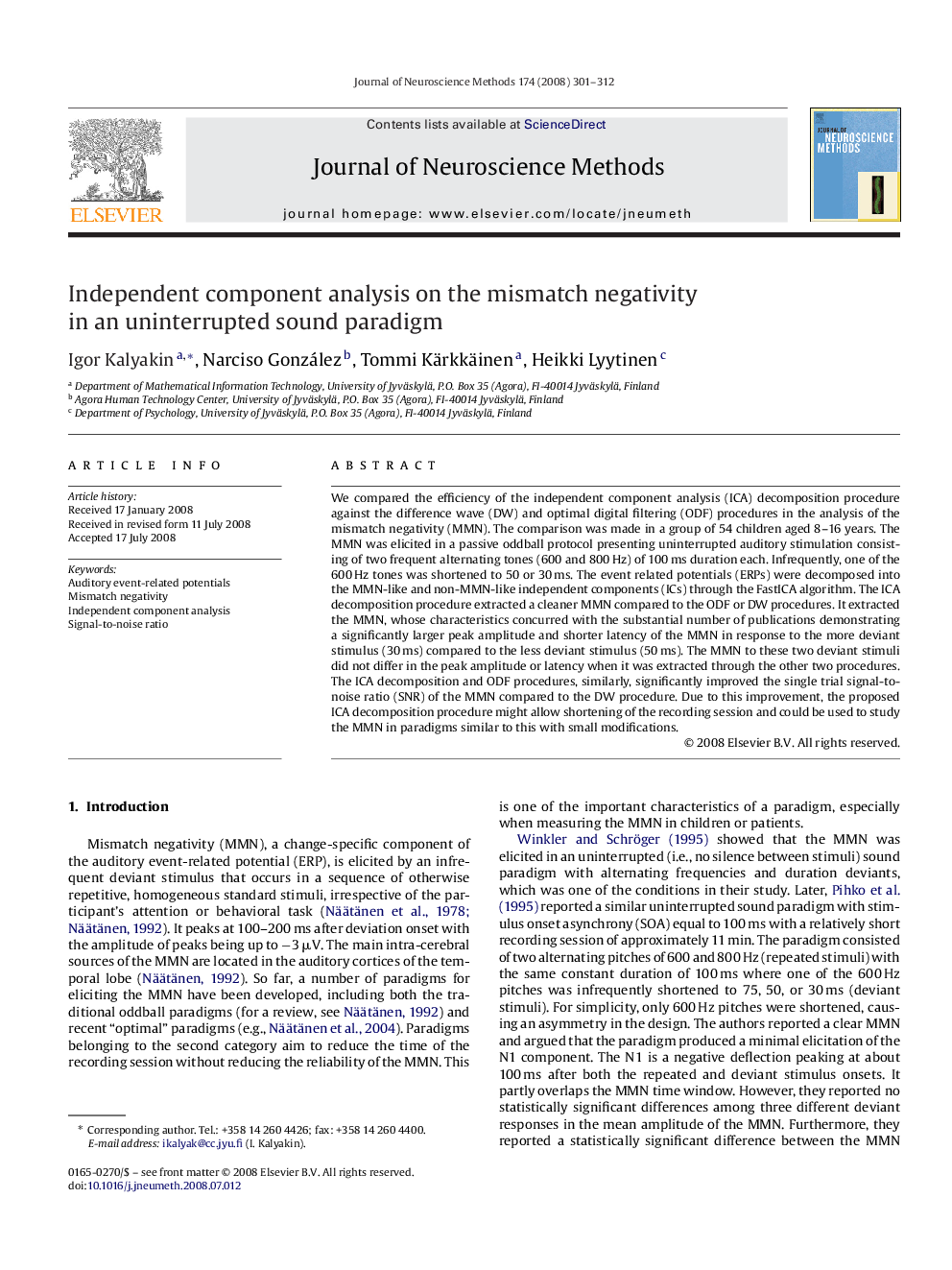| Article ID | Journal | Published Year | Pages | File Type |
|---|---|---|---|---|
| 4335962 | Journal of Neuroscience Methods | 2008 | 12 Pages |
We compared the efficiency of the independent component analysis (ICA) decomposition procedure against the difference wave (DW) and optimal digital filtering (ODF) procedures in the analysis of the mismatch negativity (MMN). The comparison was made in a group of 54 children aged 8–16 years. The MMN was elicited in a passive oddball protocol presenting uninterrupted auditory stimulation consisting of two frequent alternating tones (600 and 800 Hz) of 100 ms duration each. Infrequently, one of the 600 Hz tones was shortened to 50 or 30 ms. The event related potentials (ERPs) were decomposed into the MMN-like and non-MMN-like independent components (ICs) through the FastICA algorithm. The ICA decomposition procedure extracted a cleaner MMN compared to the ODF or DW procedures. It extracted the MMN, whose characteristics concurred with the substantial number of publications demonstrating a significantly larger peak amplitude and shorter latency of the MMN in response to the more deviant stimulus (30 ms) compared to the less deviant stimulus (50 ms). The MMN to these two deviant stimuli did not differ in the peak amplitude or latency when it was extracted through the other two procedures. The ICA decomposition and ODF procedures, similarly, significantly improved the single trial signal-to-noise ratio (SNR) of the MMN compared to the DW procedure. Due to this improvement, the proposed ICA decomposition procedure might allow shortening of the recording session and could be used to study the MMN in paradigms similar to this with small modifications.
